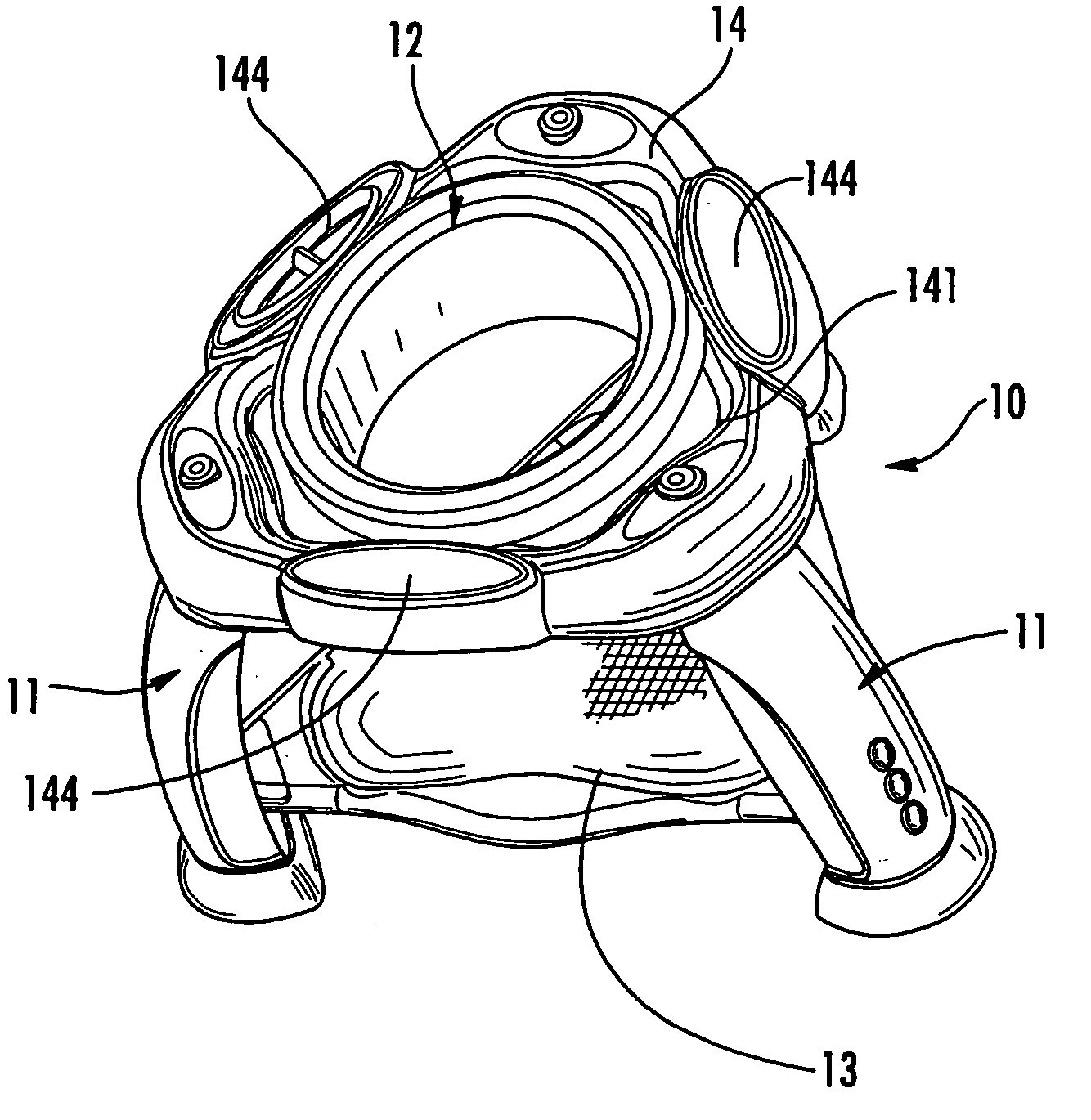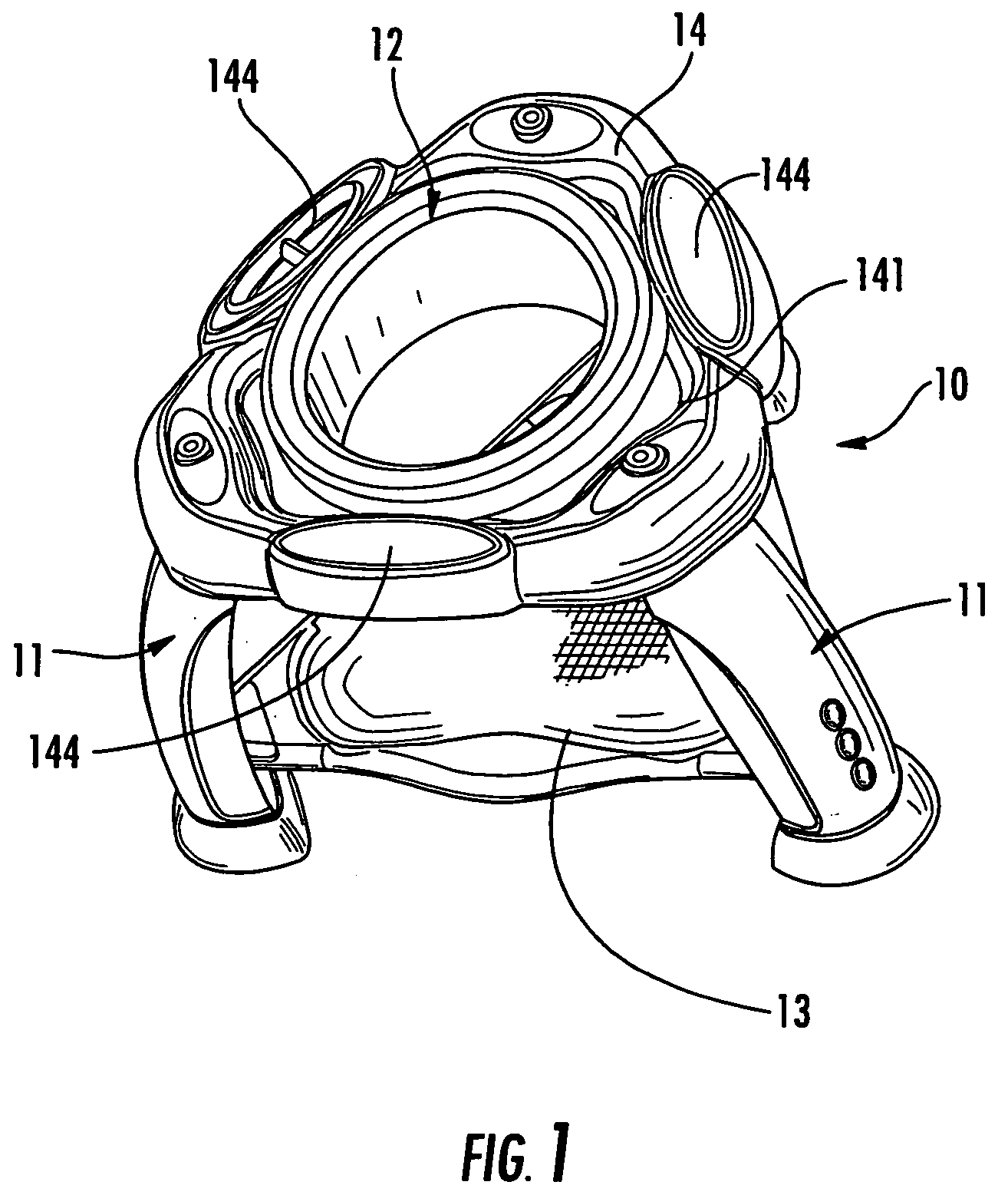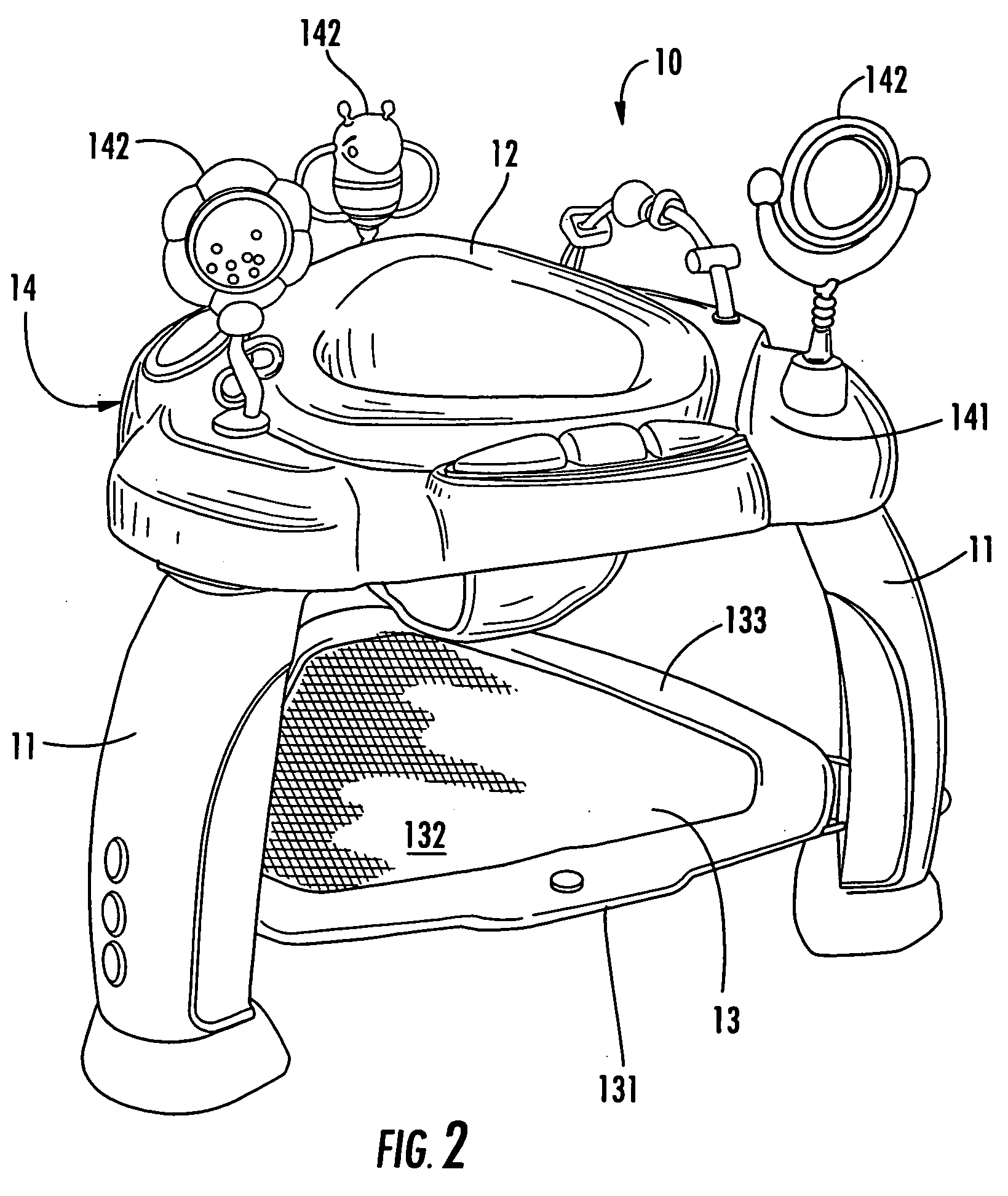Stationary child exercise apparatus with bouncing pad
a technology of stationary child and exercise apparatus, which is applied in the direction of gymnastic exercise, application, pedestrian/occupant safety arrangement, etc., can solve the problems of food or drinks on the tray to spill, the tension element of the resilient support surface cannot be adjusted to increase or decrease the amount of oscillatory movement of the platform, and the toy is unsuitable for small children. , to achieve the effect of reducing the tension element of the resilient support surface, increasing or decreasing the distance between the resilient suppor
- Summary
- Abstract
- Description
- Claims
- Application Information
AI Technical Summary
Benefits of technology
Problems solved by technology
Method used
Image
Examples
Embodiment Construction
[0040] The present invention now will be described more filly hereinafter with reference to the accompanying drawings, in which embodiments of the invention are shown. This invention may, however, be embodied in many different forms and should not be construed as limited to the embodiments set forth herein; rather, these embodiments are provided so that this disclosure will be thorough and complete, and will fully convey the scope of the invention to those skilled in the art. Like numbers refer to like elements throughout.
[0041] Generally, the present invention is directed to a children's stationary exercise apparatus. In one embodiment, the apparatus includes a seat, one or more legs depending downwardly towards a floor and supporting the seat, an activity table, and a resilient support surface, or bouncing pad. The seat is mounted in the center of the activity table and can be configured to rotate 360° about its own axis of rotation. The legs extend downwardly and outwardly from ...
PUM
 Login to View More
Login to View More Abstract
Description
Claims
Application Information
 Login to View More
Login to View More - R&D
- Intellectual Property
- Life Sciences
- Materials
- Tech Scout
- Unparalleled Data Quality
- Higher Quality Content
- 60% Fewer Hallucinations
Browse by: Latest US Patents, China's latest patents, Technical Efficacy Thesaurus, Application Domain, Technology Topic, Popular Technical Reports.
© 2025 PatSnap. All rights reserved.Legal|Privacy policy|Modern Slavery Act Transparency Statement|Sitemap|About US| Contact US: help@patsnap.com



